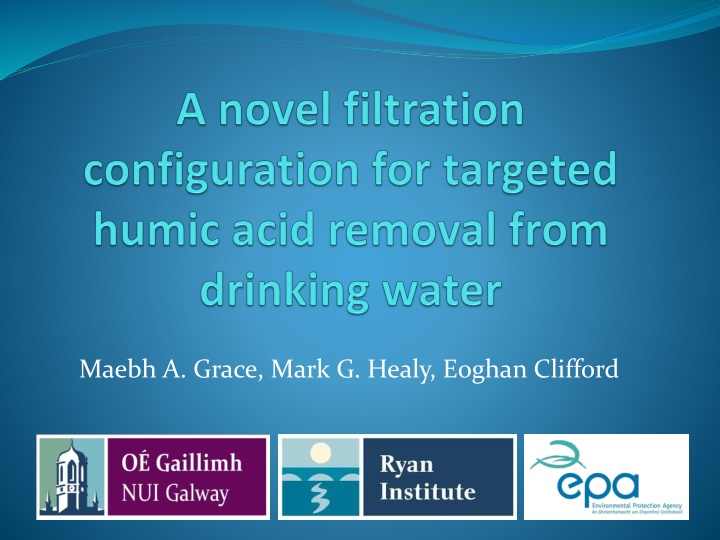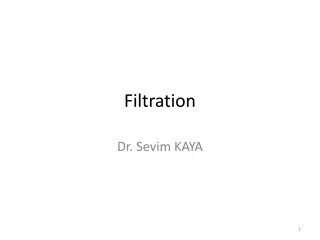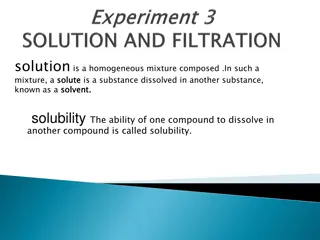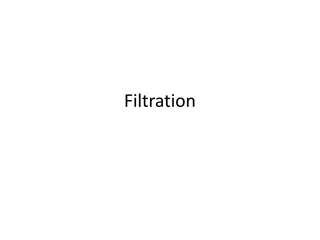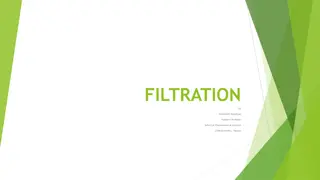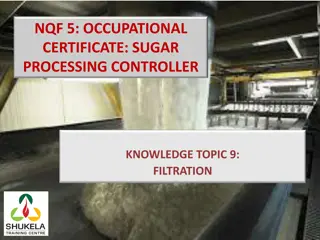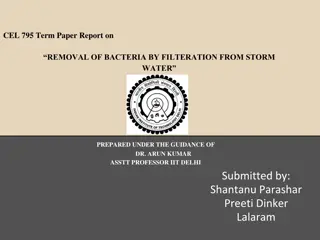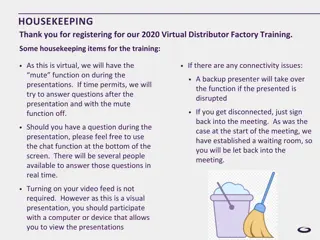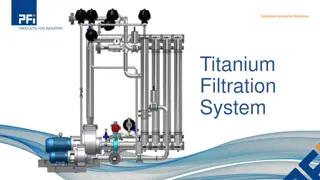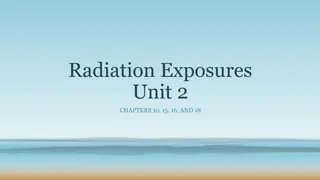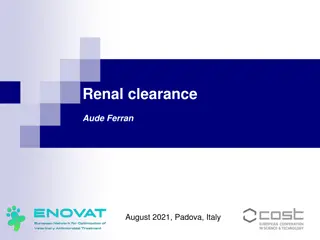Innovative Redesign of Water Filtration Systems for Enhanced Removal of Natural Organic Matter
Redefining water treatment methods with a focus on Natural Organic Matter (NOM), this study introduces a novel approach using waste materials for sustainable and cost-effective solutions. Through media classification, filter construction, and operation analysis, the research demonstrates improved efficiency in removing toxic components and enhancing water quality.
Download Presentation

Please find below an Image/Link to download the presentation.
The content on the website is provided AS IS for your information and personal use only. It may not be sold, licensed, or shared on other websites without obtaining consent from the author.If you encounter any issues during the download, it is possible that the publisher has removed the file from their server.
You are allowed to download the files provided on this website for personal or commercial use, subject to the condition that they are used lawfully. All files are the property of their respective owners.
The content on the website is provided AS IS for your information and personal use only. It may not be sold, licensed, or shared on other websites without obtaining consent from the author.
E N D
Presentation Transcript
Overview Why Natural Organic Matter? Our solution Introduction Materials and Methods Filter construction Performance results and conclusions Results and conclusion
Introduction NOM in drinking water Measured as organic carbon Trihalomethanes Haloacetic acids Disinfection by-product formation Toxic Carcinogenic Chlorine Ozone Disinfectant
Introduction Redesign the traditional sand filter using novel media Reuse of waste material for a cost-effective and sustainable solution Plentiful NOM sources Why target NOM? 10 % Total Trihalomethane non-compliance in Ireland Highest TTHM recorded: 245 g L-1 Max allowable THM (mg L-1) US: 80 Europe: 100 Current solutions are expensive and unsustainable Retrofitting not redesigning
Materials and Methods Media Classification adsorption isotherms for DOC R2 Qmax ( g g-1) Media Isotherm 1/n K Sand Desorption Zeolite Langmuir 0.71 37 Fly ash Freundlich 0.73 1.17 0.262 GAC Langmuir 0.42 327 Bayer residue Freundlich 0.83 0.68 0.019
Materials and Methods Filter construction and operation Control Config 1 Config 2 Bayer Residue Flyash 1 m of media as per EPA guidelines 2 loading regimes Constant and intermittent Dosed with a synthetic mix Humic acid as TOC source GAC Zeolite Sand Zeolite Sand Sand
Materials and Methods Humic acid as TOC source Representative of DOC from peatland areas Relevant for Irish water treatment facilities Laboratory grade Process to extract and dispose of insoluble fraction Add to water and mix for 25 min Centrifuge at 1000 RPM for 30 min Filter through 0.45 m filter
Config 2: Fly ash GAC Zeolite Sand Config 1: Bayer Residue Zeolite Sand Results Loading Regime Average concs mg DOC L-1 % DOC Removal Continuous Influent Concentration 5.8 2.2 Effluent Concentration Control Config 1 Config 2 4.2 1.9 3.7 1.8 1.7 1.6 27.6 3.3 36.2 10.9 58.8 4.8 Intermittent Influent Concentration 6.0 1.7 Effluent Concentration Control Config 1 Config 2 4.5 1.8 4.0 1.8 2.3 1.6 25 2.5 33.3 4.8 61.6 10
Results Continuous Intermittent Control Control 0 0 Depth from surface (m) 0.2 0.2 0.4 0.4 0.6 0.6 0.8 0.8 1 1 0 50 100 0 50 100 % DOC Removal
Config 1: Bayer Residue Zeolite Sand Results Continuous Intermittent Config 1 Config 1 0 0 Depth from surface (m) 0.2 0.2 0.4 0.4 0.6 0.6 0.8 0.8 1 1 0 100 200 -50 0 50 100 % DOC Removal
Config 2: Fly ash GAC Zeolite Sand Results Continuous Intermittent Config 2 Config 2 0 0 Depth from surface (m) 0.2 0.2 0.4 0.4 0.6 0.6 0.8 0.8 1 1 0 50 100 0 50 100 % DOC Removal
Config 2: Fly ash GAC Zeolite Sand Discussion Both configurations more effective than control Configuration 2 most effective Clogging was observed across all filter configurations Humic acid mix: high suspended solids Approx. 200 mg L-1 DOC removal decreased over time Clogging of upper layers, DOC leaching and media saturation
Clogging Issue K/Kv K/Kv K/Kv 0.0 0.2 0.4 0.6 0.8 1.0 0.0 0.2 0.4 0.6 0.8 1.0 0.0 0.2 0.4 0.6 0.8 1.0 0 0 0 0.05 0.05 0.05 0.1 0.1 0.1 Depth (m) 0.15 0.15 0.15 0.2 0.2 0.2 0.25 0.25 0.25 K/Kv: Normalised hydraulic conductivity 0.3 0.3 0.3 0.35 0.35 0.35 Clogging results for continuously loaded filters Constant head permeability test Falling head permeability test Clogging of control extended further below surface Clogging of config 1 and config 2 was very similar
Outlook for technology adoption DBP formation potential removed at filtration stage Plants can be retrofitted rather than redesigned Media can become saturated Potentially mitigated by replacing the clogging layer Media may need repositioning, given potential for clogging Further work involves investigation of other contaminants and media combinations
Config 2: Fly ash GAC Zeolite Sand Conclusions Alternative media may be used for NOM removal Bayer residue, fly ash, zeolite and GAC Sustainable design, using locally available waste materials Config 2 was most effective Clogging did occur Both configs were more effective than a standard sand filter A redesign will mitigate clogging, while maintaining a successful and sustainable technology
Questions? Thank you for your attention Any Questions?
